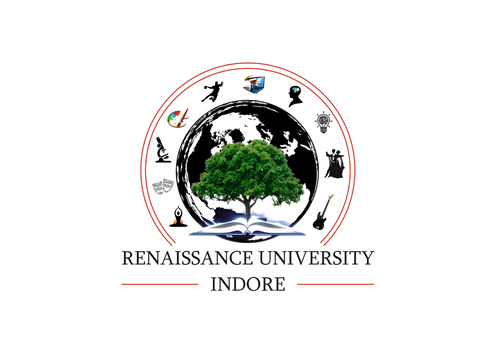




Previous
Next
RU DET Syllabus-CS A GREAT FUTURE RELIES
ON GREAT EFFORT.
- Home
- RU DET Syllabus Computer Science
“Anyone who has never made a mistake has never tried anything new.”
ALBERT EINSTEIN
Unit – I Information technology
Types of Input / Output devices, storage and memory devices. Computer Software: System, Utility and Application Software, Compilers, Interpreters and Assemblers. Computer Languages: Levels of languages, generation and their features. Computer Organization: Control Unit, ALU, Memory Unit.
Unit-II Computer Organization and Architecture
Digital and Analog computers. Number Systems: Binary, octal, hexa and binary Numbers system, Number system Conversions, 1‘s and 2’s Complement, Signed Binary Numbers. Binary Codes: BCD code, Gray Code, ASCII code, Error detecting Code. Logic gates, K-Map, AND, OR, NAND and NOR, Exclusive-OR function, Fixed and Floating point representation. Combinational Logic: Binary adder, subtracter, multiplier, Decoders, Encoders, Multiplexes, and Demultiplexers.
Unit- III Relational Database Management System
Data Model: primary concept of data models. ER model, ER Schema to tables, Types of Keys, specialization, generalization Basic concept of Indexing. Introduction to different operators, set operators, aggregate functions.
SQL Statement: DDL, DML, DCL, TCL Queries, Stored procedure, trigger, Function and cursor. Normalization: Functional dependencies, first, second, third and BCNF normal form.
Advanced SQL : Concept of group by, having order by clause, nested query, join & Its types.
SQL Statement: DDL, DML, DCL, TCL Queries, Stored procedure, trigger, Function and cursor. Normalization: Functional dependencies, first, second, third and BCNF normal form.
Advanced SQL : Concept of group by, having order by clause, nested query, join & Its types.
Unit – IV Web technologies
HTML Tag, XML, CSS, Java Scripting.
Unit – V Operating System
Operating system concepts, Processor Management: Concepts, Algorithms for batch processing Memory Management, File System organization, I/O Subsystems, distributed and network operating system etc.
Concurrent Processes: Mutual exclusion and synchronization, Deadlock CPU scheduling, Handling File Management: Operations on a file, structure of a file system Free block list, directory structure, sharing and protection of files, file system Reliability, Memory Allocation Related Functions.
Real Time Operating Systems: Definitions of process, tasks and threads.
Unix editor: Introduction, features Basic commands (like: pwd, cp, cd, rm, mv, ls, cat, mkdir, ch mod, rmdir, who, who am I, banner, date, kill, etc.), Creating new files.
Shell programming: Features of shell, Unix system administration: Adding and removing users and Kernel.
DOS: Description of DOS OS, Commands of DOS.
Concurrent Processes: Mutual exclusion and synchronization, Deadlock CPU scheduling, Handling File Management: Operations on a file, structure of a file system Free block list, directory structure, sharing and protection of files, file system Reliability, Memory Allocation Related Functions.
Real Time Operating Systems: Definitions of process, tasks and threads.
Unix editor: Introduction, features Basic commands (like: pwd, cp, cd, rm, mv, ls, cat, mkdir, ch mod, rmdir, who, who am I, banner, date, kill, etc.), Creating new files.
Shell programming: Features of shell, Unix system administration: Adding and removing users and Kernel.
DOS: Description of DOS OS, Commands of DOS.
Unit VI Programming Language
Programming to C: Programming Concepts with Flowcharting and algorithms, Data types, Constants, Variables, Expressions, Operators and Decision Control, Loop and case Control. Arrays & structure: One dimensional and multidimensional array, Pointers, Structures and Union.
Function: User defined, Parameter passing, Recursion, String Handling Functions, Standard Enumerations and bit fields, Pre-Processors directives, File Handling.
Object Oriented programming: Abstraction, Encapsulation, Class and Objects, Function Overloading, Inline Functions, Constructors, destructors, friend function, dynamic memory allocation, Inheritance, operator Overloading, Polymorphism, Static Method, static field and exception handling.
Function: User defined, Parameter passing, Recursion, String Handling Functions, Standard Enumerations and bit fields, Pre-Processors directives, File Handling.
Object Oriented programming: Abstraction, Encapsulation, Class and Objects, Function Overloading, Inline Functions, Constructors, destructors, friend function, dynamic memory allocation, Inheritance, operator Overloading, Polymorphism, Static Method, static field and exception handling.
Unit – VII Data Structures and Algorithms Data Structures
Definition, Arrays, Stacks, Queues, Dequeues, Linked Lists, Singly and doubly linked list. Sorting: Introduction, Sorting by exchange, selection, insertions, Bubble sort, Selection sort, Insertion sort, merge sort, Quick sort Algorithm, Heap sort.
Trees : Definition, Tree types and their Implementation. Preorder, post order, inorder traversal Search: Linear Search, Sequential Search, Binary Search, Interpolation Search.
Graphs: Definition and implementation and Graph Algorithms BFS, DFS, Minimum spanning trees and Shortest Paths algorithm.
Trees : Definition, Tree types and their Implementation. Preorder, post order, inorder traversal Search: Linear Search, Sequential Search, Binary Search, Interpolation Search.
Graphs: Definition and implementation and Graph Algorithms BFS, DFS, Minimum spanning trees and Shortest Paths algorithm.
Unit – VIII Computer Networks
LAN technologies (Ethernet, Token ring), LAN, MAN and WAN and topologies, LAN components – File server, Workstations, Network Adapter Cards. Client Server Architecture, DNS, WWW and HTTP, Cookies, Proxy Server. Flow and error control techniques, Routing algorithms, Congestion control, IP(v4), Application layer protocols (icmp, dns, smtp, pop, ftp, http, Basic concepts of hubs, switches, gateways, and routers. Network Security: Cryptography, Symmetric- key Algorithms, Public- key Algorithms, Digital Signatures, firewalls. Reference models – OSI and TCP/IP and UDP Protocol. Types of Network medium.
Unit – IX Software Engineering
SDLC Steps, Water fall model, information gathering, requirement and feasibility analysis, data flow diagrams, process specifications, input/output design, process life cycle, planning and managing the project, design, coding, testing, implementation, maintenance. Testing Level metrics, s/w quality and reliability
Unit X Theory of Computation
Theory of Automation: Description of DFA,NFA, 2DFA, Regular expressions & grammar. Formal Languages: Pharse structured grammars & their classification, Chomskey classification, regular grammar, regular set & their closure properties, finite automata.
Context-Free grammar & PDA : Properties unrestricted grammar & their equivalence, normal form for CFG, Pushdown automata, 2 way PDA, relation of PDA with CFG, Determinism & Non determinism in PDA & related theorems.
Turing Machine: Model, design, representation of TM, language accepted by TM, universal turing machine, determine & non-determinism in TM.
Context-Free grammar & PDA : Properties unrestricted grammar & their equivalence, normal form for CFG, Pushdown automata, 2 way PDA, relation of PDA with CFG, Determinism & Non determinism in PDA & related theorems.
Turing Machine: Model, design, representation of TM, language accepted by TM, universal turing machine, determine & non-determinism in TM.


